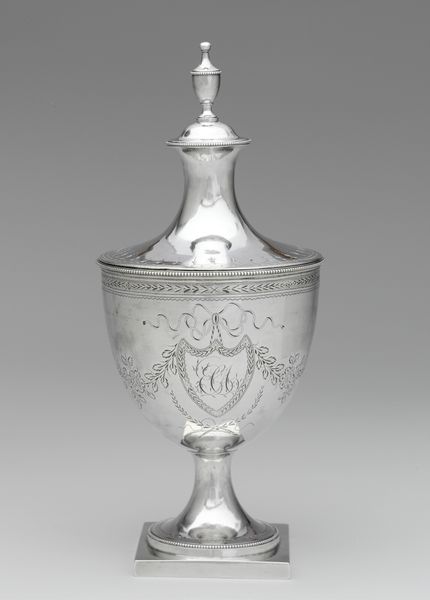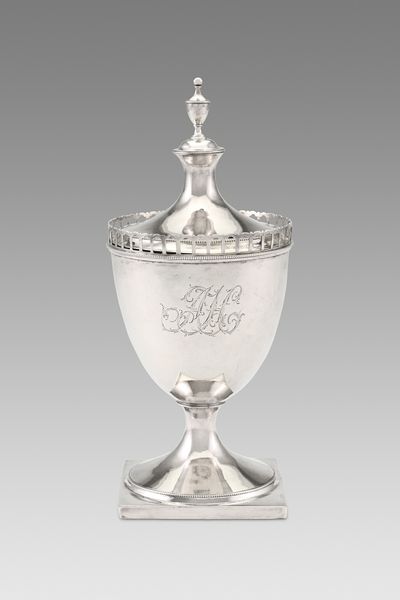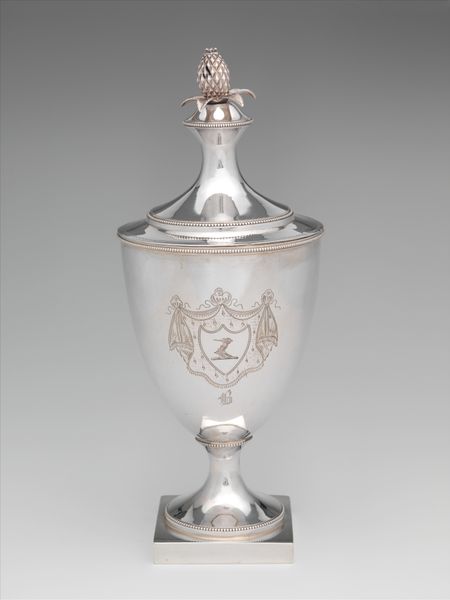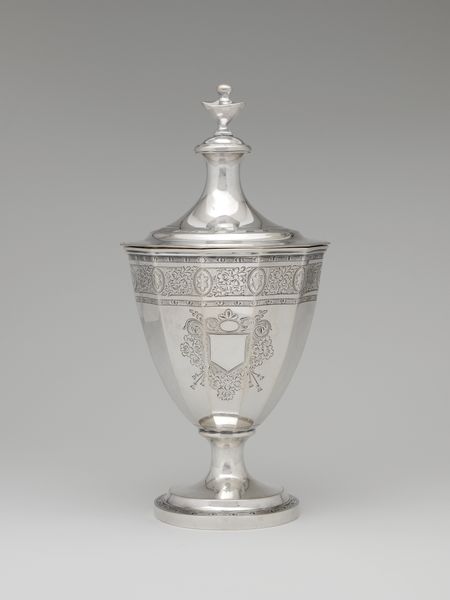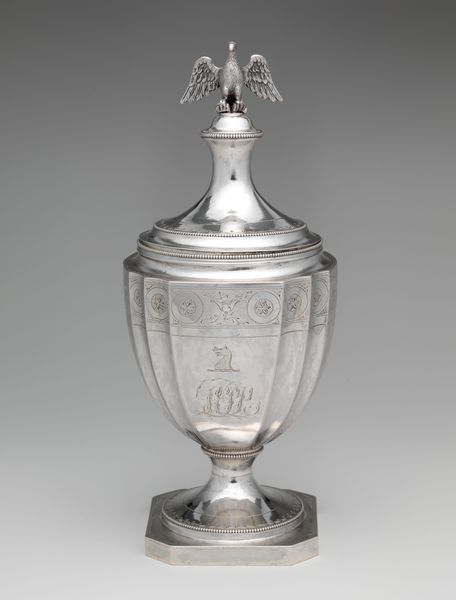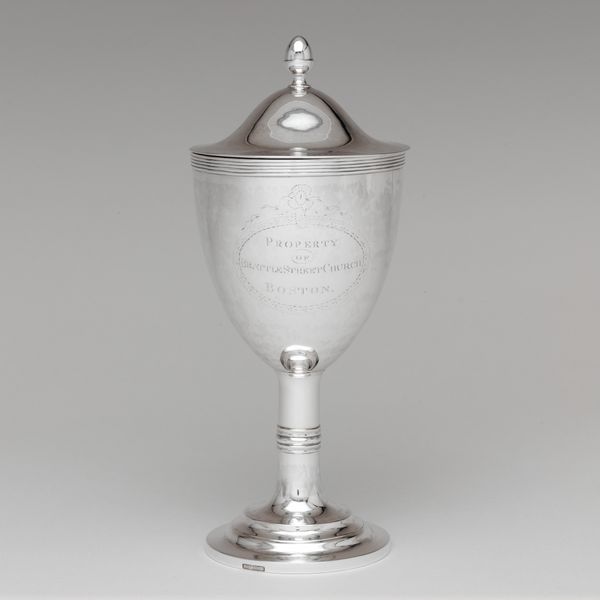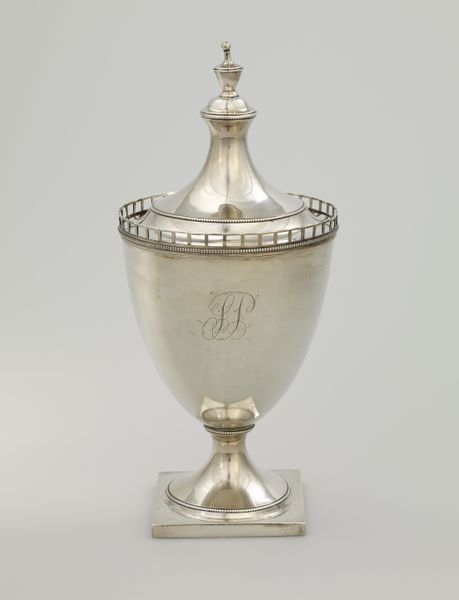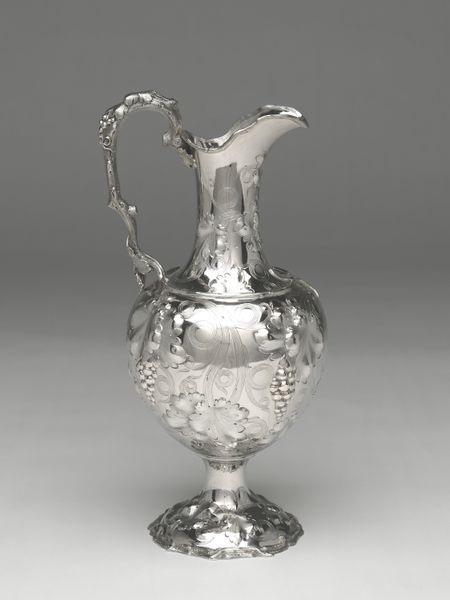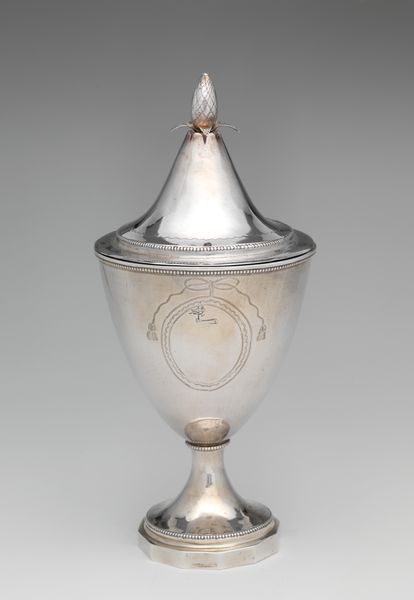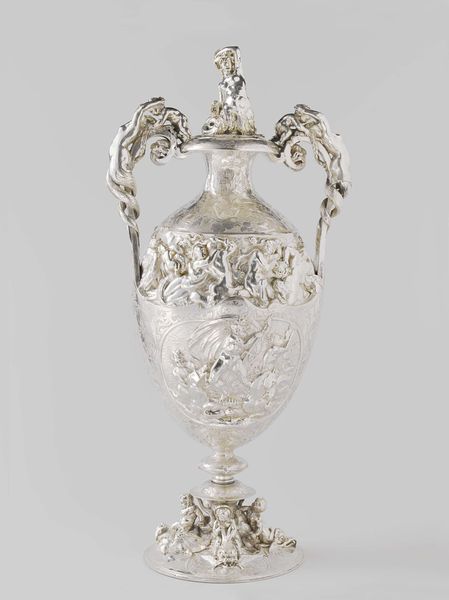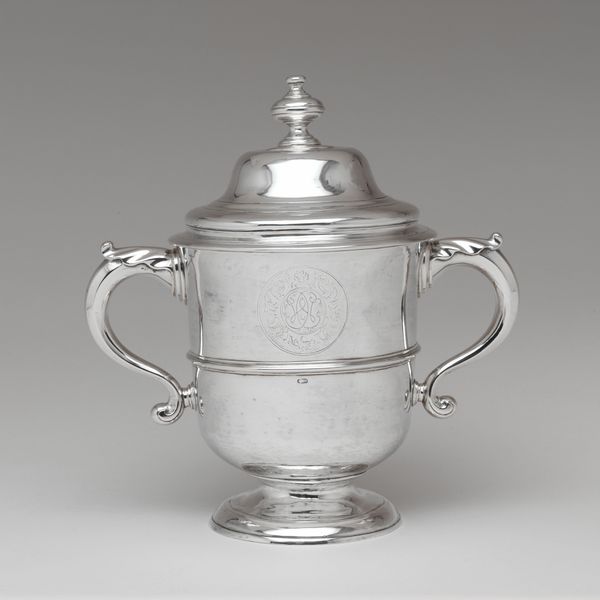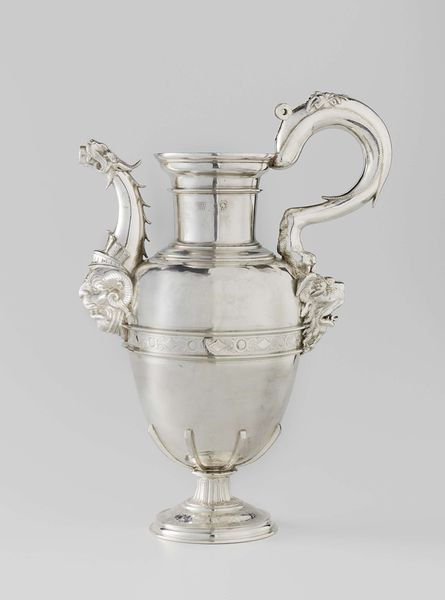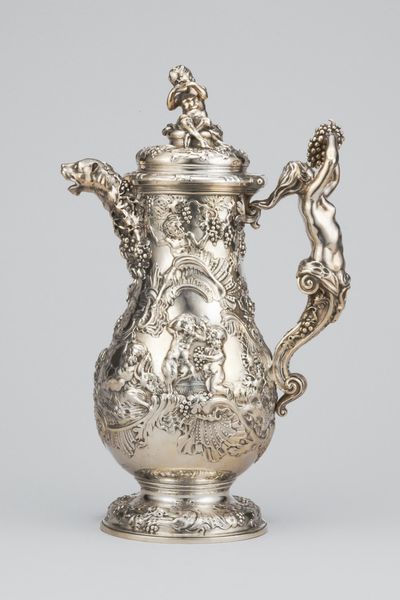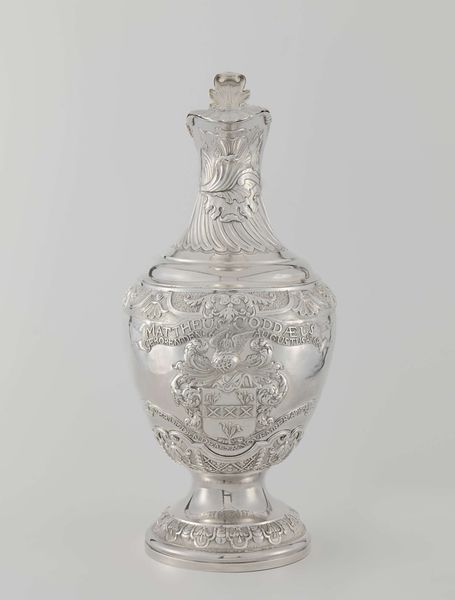
silver, metal
#
neoclacissism
#
silver
#
metal
#
united-states
#
decorative-art
Dimensions: Overall: H. 9 15/16 in. (25.2 cm); 11 oz. 13 dwt. (362.1 g) Lip: Diam. 4 1/4 in. (10.8 cm) Foot: 2 7/8 x 2 13/16 in. (7.3 x 7.1 cm) Body: H. 6 1/16 in. (15.4 cm); 7 oz. 8 dwt. (230.9 g) Cover: 4 x 4 in. (10.2 x 10.2 cm); 4 oz. 4 dwt. (131.2 g)
Copyright: Public Domain
This silver Sugar Bowl was crafted by Joel Sayre, a silversmith active in New York during the late 18th and early 19th centuries. While it may appear as a functional piece of tableware, it serves as a potent symbol of the intricate links between luxury and the brutal history of slavery. During this period, sugar was a highly sought-after commodity, cultivated by enslaved people on plantations in the Caribbean and the Americas. Owning a refined object like this sugar bowl signified wealth and status, and also complicity in a system of exploitation. Consider the initials inscribed on its surface. They speak to the identity of the bowl's owner, most likely a wealthy merchant, and perhaps even a family involved in the trade. The very sweetness it once held came at an immeasurable cost, one of human suffering and injustice. This bowl is an enduring testament to the complex and often troubling narratives embedded within seemingly beautiful objects.
Comments
No comments
Be the first to comment and join the conversation on the ultimate creative platform.
